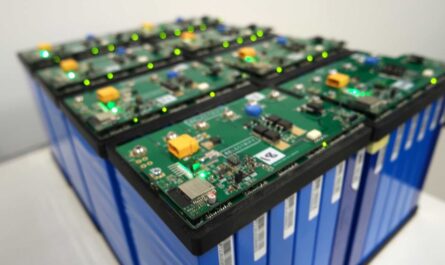A Programmable Logic Controller, commonly known as a PLC, is a digital computer used for automation of industrial electromechanical processes. PLCs were first introduced in the late 1960s as affordable alternatives to hardwired relay controls to allow convenient modification or expansion of the control system without having to rewire the physical system. Since then, PLCs have become the most widely used automation systems. This article will discuss the basic workings, applications and role of PLCs in modern industrial automation.
What is a PLC?
As mentioned earlier, a Programmable Logic Controller is essentially a digital computer designed for industrial applications such as equipment control, processes control and manufacturing equipment. It functions much like a regular computer but is designed for rugged operating conditions like extreme temperatures, humidity, vibration and electrical noise. The key components of a PLC include a microprocessor or microcontroller, Input/ Output modules, power supply, communication ports and a programming module. It scans inputs, executes a stored program to control outputs and performs functions like timing, counting, arithmetic operations etc. PLC programs are written using a graphical programming language in ladder logic format similar to ladder diagrams of hardwired relay controls.
Applications of PLCs
PLCs have become ubiquitous for industrial control applications due to their reliability, flexibility and cost effectiveness. Some common applications of PLCs include machine tools control, packaging line control, blending and dispensing systems, bottling lines, assembly and material handling systems, heating, ventilation and air conditioning control, printing and converting machinery, automated test equipment, food and beverage processing systems and more. PLCs can control various system functions like motor startup sequences, production tracking, quality control using statistical process control techniques, alarm notification and more. Their open standard architecture allows easy integration with other devices like HMIs, sensors, drives and networking equipment.
Advantages of PLC Programming
There are several advantages of using PLCs over hardwired relay controls including:
– Modular and scalable – Additional input/output modules can be added easily without redesigning the entire control system. This allows expansion or modification of the control system anytime.
– Flexible – The control program can be modified or replaced easily through programming without changes to physical wiring unlike relays.
– Versatile – One PLC can control an entire plant or process with its ability to perform sequential, timing, counting, arithmetic and communication functions.
– Robust – PLC systems are designed to withstand harsh environmental conditions like extreme temperature, vibrations, shock compared to relay logic cabinets.
– Cost effective – Design, troubleshooting and modifications are much easier and cheaper compared to rewiring relay controls. Standardization of I/O modules also reduces spare part needs.
Role of PLCs in Industrial Automation
Industrial automation refers to the use of control systems like PLCs, HMIs, sensors and robots to handle functions previously performed by humans. PLCs have revolutionized factory automation by providing precise, fast and reliable digital control over manufacturing equipment, processes and material handling. Some key roles of PLCs in industrial automation include:
– Centralized integrated control – A single PLC can control an entire manufacturing cell or production line integrating several machines, sensors and actuators seamlessly under one control program.
– Sequential control – PLCs are proficient at sequential control of multi-step automation processes like assembly lines, mixing/blending systems etc. through its ability to store user programs.
– Error detection – Sophisticated PLC programs includes error detection, alarm handling and reporting to ensure robust processes through continuous monitoring and corrective actions.
– Data logging – Production and process data like temperatures, pressures, speeds can be logged and stored in PLC for record-keeping, analysis and continuous improvement through statistical process control techniques.
– Quality control – Quality parameters can be accurately checked, counted and verified at each stage of production through feedback from sensors to maintain consistent quality standards.
– HMI integration – PLC systems handle complete man-machine interface functions through HMIs to monitor and operate processes with programmed displays, alarms and parameter control screens.
– Remote access – Capability for remote access to PLC systems through human-machine interfaces or SCADA systems enables remote monitoring and control of geographically dispersed automated assets.
While PLCs operate behind the scenes, they play a crucial role as the brains and backbone of modern industrial automation through reliable control, data handling, integration and actuation capabilities. Their continued evolution will continue to push the boundaries of plant-wide automation.
PLCs have become ubiquitous and essential components in industrial automation and manufacturing industries. Their open architecture, modular design, programming flexibility and ability to withstand rough operating conditions make them ideal digital controllers over traditional hardwired relay systems. Looking ahead, PLCs will continue to integrate more advanced technologies like IoT, machine learning, predictive maintenance capabilities to further optimize plant floor operations, productivity and efficiency.
*Note:
1. Source: Coherent Market Insights, Public sources, Desk research
2. We have leveraged AI tools to mine information and compile it




